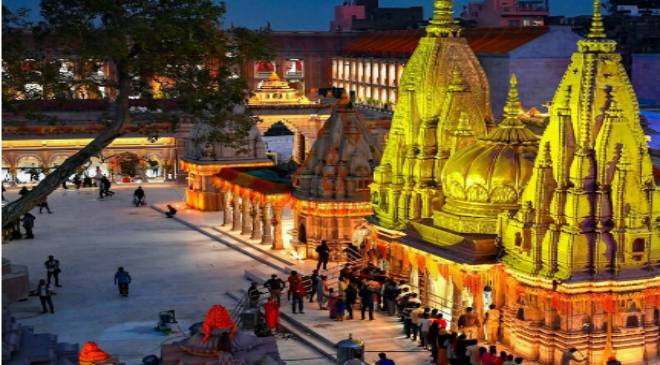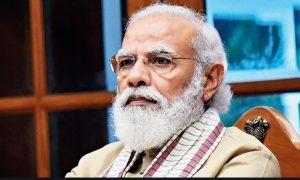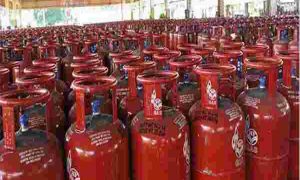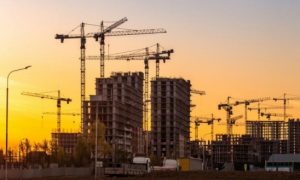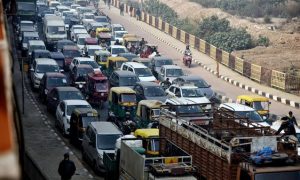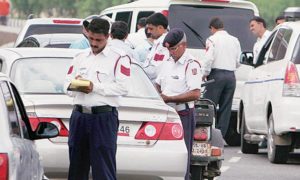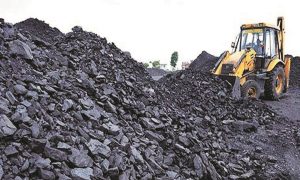🔴 The improvement of the infrastructure in Varanasi is expected to give a boost to tourism in the holy city as well as in the region, including the Buddhist pilgrimage site of Sarnath.
On Monday (December 13) afternoon, Prime Minister Narendra Modi inaugurated the Kashi Vishwanath Corridor connecting the ancient Kashi Vishwanath Temple in Varanasi to the ghats of the Ganga.
The corridor, said to be the PM’s dream project, has been built over an area of 5,000 hectares, and seeks to not only decongest but to also transform the temple complex.
The vision
The Rs-800-crore project was launched by the PM in his parliamentary constituency in March 2019, with the aim of restoring the “lost glory” of the spiritual centre.
Officials say it had long been Modi’s vision to create better conditions for pilgrims and devotees, who had to endure the infamously congested streets and surroundings of the temple.
The Kashi Vishwanath temple lacked direct access to the Ganga, and a 20-foot-wide corridor was envisaged to connect Lalita Ghat on the holy river to Mandir Chowk on the temple premises.
“Shiva bhakts can take a dip in the river every morning and worship the Lord in the temple, which will now have direct visibility from the ghat,” an official of the Ministry of Culture said.

The project
Around 1 pm on December 13, the Prime Minister will inaugurate phase 1 of the project, constructed at a cost of around Rs 339 crore. A total 23 buildings will be inaugurated, including a Tourist Facilitation Centre, Mumukshu Bhavan, Bhogshala, City Museum, Viewing Gallery and Food Court.
It may be a few more weeks before some of these phase 1 projects are actually ready to be opened to the public. The Prime Minister’s event will take place before the impending Assembly elections in Uttar Pradesh, and ahead of the announcement of the poll schedule.
Read More:- Bank-NBFC co-lending: how it works, and the concerns it raises

The tourism push
The improvement of the infrastructure in Varanasi is expected to give a boost to tourism in the holy city as well as in the region, including the Buddhist pilgrimage site of Sarnath.
The Rudraksh Convention Centre, designed like a Shiva lingam, can seat 1,200 people, and has divisible meeting rooms, an art gallery, and multipurpose pre-function areas.
Ganga cruises are planned for tourists, road infrastructure has been upgraded, and the Banaras railway station in the city’s Manduadih area has been revamped with the addition of an air-conditioned waiting lounge.
Elsewhere in the city, LED screens will display information for tourists, including on the history, architecture, and art of Kashi. The famous Ganga Aarti and the aarti at the Kashi Vishwanath temple will be shown on the screens throughout the city.
The Deen Dayal Hastkala Sankul, a trade facilitation centre for weavers, craftsmen, and artisans of Varanasi that was opened in 2017, acts as both a public place and a marketing platform for local artisans.

Heritage restoration
Officials say the PM insisted that while removing properties that were clogging the proposed corridor, existing heritage structures were preserved.
During demolition of the buildings, more than 40 ‘lost’ temples like the Gangeshwar Mahadev temple, the Manokameshwar Mahadev temple, the Jauvinayak temple, and the Shri Kumbha Mahadev temple were discovered. Each of these temples has a history going back a few centuries. A gallery has been devoted to showcase some of the excavated remains at the National Museum in New Delhi, and to run a narrative on their histories on screens alongside.
In Varanasi, “smart signages” have been erected to provide information on the cultural importance of heritage sites and the city’s 84 ghats, which are known for their antiquity and architectural significance.

Modi’s temple pitch
The push to revamp and redevelop the Kashi Vishwanath complex is in line with the Prime Minister’s ambitious projects for temples around the country.
He has laid the foundation stone for the Ram temple in Ayodhya, and pushed beautification and redevelopment projects at the Somnath complex and the Kedarnath Dham which saw widespread destruction in the 2013 floods.
He has repeatedly described these as nation-building projects, the successful fruition of an ancient land’s efforts to find and celebrate its ancient glory.

